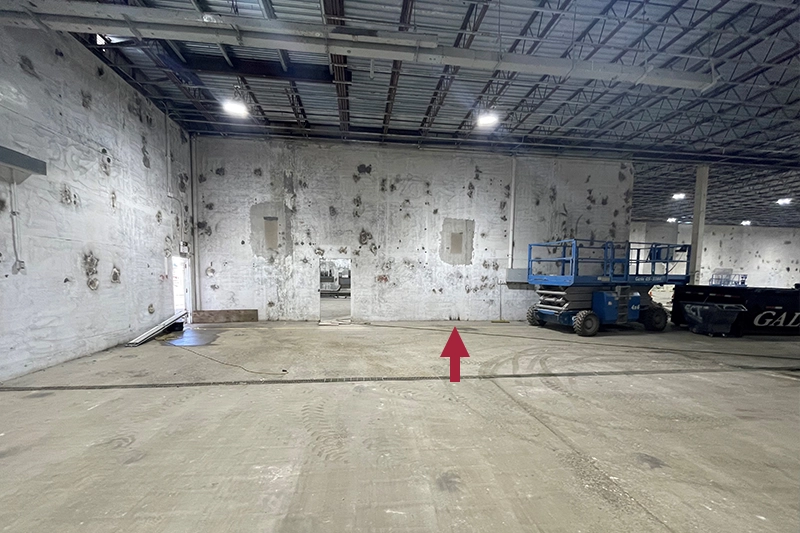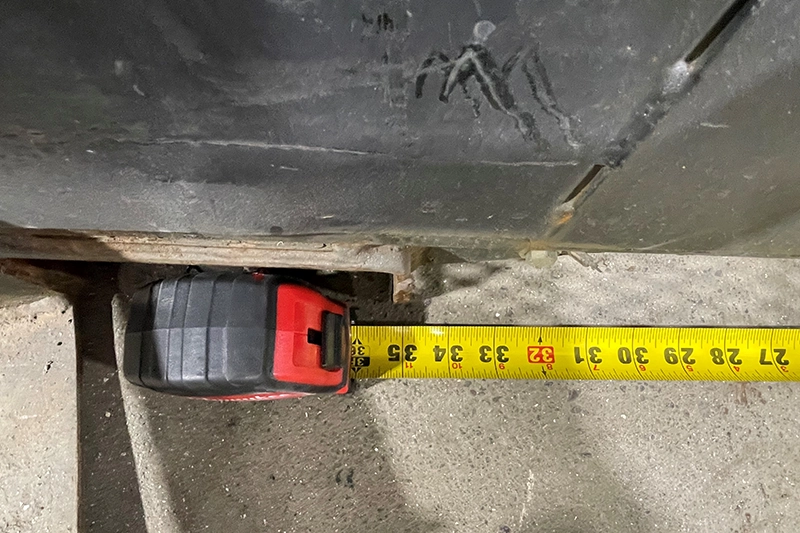Oregon OSHA fined a general construction contractor $10,375 for failing to protect an employee who fell from an unsecured aerial work platform.
-
Company: General contractor, construction management
-
Hazard: Unsecured aerial work platform
-
Employee: Foreman
-
Incident date: Dec. 4, 2024
What happened?
Two of the company’s employees, both foremen, had been assigned to mix and pour concrete into forms to close wall openings in a warehouse. They planned to use a scissor lift mobile scaffold to reach the openings, which were 5 feet above the floor, but another employee needed to use it. A Hyster H50XT forklift was available, so they decided to use it instead of the scissor lift.
They also needed a work platform to place on the Hyster’s forks, so they could reach the wall openings. The only platform available was one designed to fit a JLG Telehandler (a mobile lift with a telescopic boom). They placed the platform on the Hyster’s forks just in front of the mast, filled two 5-gallon buckets with concrete, and put them on the platform.
They were not able to secure the platform to the Hyster’s forks because the distance between the Hyster 50XT forks was 33.25 inches and the distance between the fork pockets on the Telehandler platform was 35.25 inches. But it was the only platform available, and they thought it would be safe because the wall openings were only 5 feet above the floor.
One of the foremen stepped onto the platform and wrapped a wire around its safety gate to keep the gate open. The other foreman got in the Hyster 50XT, raised the platform 5 feet above the warehouse floor, and drove toward the wall openings.
The foreman on the unsecured work platform stepped sideways and suddenly the platform tipped off the Hyster’s forks. He tried to grab the forklift’s mast to regain his balance, but his fingers slipped and he fell backwards, landing feet first on the concrete floor. His legs couldn’t support him, and he collapsed just before the platform fell onto his legs.
Four nearby employees rushed over, lifted the platform off the foreman’s legs, and called 911. They stayed with him until emergency responders arrived and rushed him to a nearby hospital, where he was treated for a lower-back compression fracture and contusions on his head and right leg.
 The red arrow was added to identify where the accident had occurred. The wall opening was completed prior to the opening of the investigation.
The red arrow was added to identify where the accident had occurred. The wall opening was completed prior to the opening of the investigation.
 This picture shows the JLG work platform that was not secured when used to hoist the injured employee. The tape measure shows approximately 35 inches from inside to inside of fork pockets.
This picture shows the JLG work platform that was not secured when used to hoist the injured employee. The tape measure shows approximately 35 inches from inside to inside of fork pockets.
Key findings
- The Hyster 50XT forklift was designed for handling material, not for lifting people. The user manual states, “If a lift truck is used to elevate a worker, a safety platform must be attached to the forks and carriage. The platform must be specially built to meet or exceed the requirements of ANSI/ITSDF B56.1. It must have a solid floor with a surface to prevent the feet of the worker from slipping, hand rail, toe board, and screen or shield at least 7 feet high between the people on the platform and the [mast].”
- The Telehandler platform did not have a screen or shield to prevent the employees from contacting moving parts on its mast.
- The employees wired the Telehandler platform’s safety gate open to make it easier to load the two 5-gallon buckets of concrete; they didn’t close it after they began their work, and the employee on the platform fell through the opening when the platform started to tip.
What did the company do in response to the accident?
The company investigated the accident and determined that the two employees “deliberately violated its established safety protocols, demonstrated gross misuse of equipment, and failed to comply with [its] fall protection requirements.” The company also prohibited the employees from using machines for 90 days and required them to be retrained and recertified before they could operate machines again.